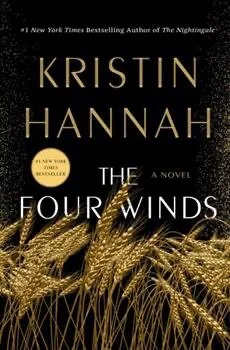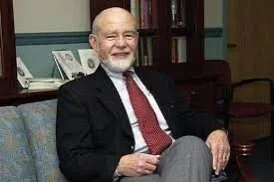When last we met, I was, beating up on Kristin Hannah’s Four Winds as an example of a shallow book. Jerry had a different perspective. I thought this time I’d let him talk. He didn’t want to write this himself, so I transcribed his part of the conversation as best I could. Henceforth, this is Jerry speaking:
“You know, a lot of people think Four Winds is a good book! It’s been on top of the NYT bestseller list. It’s probably not lasting, not like Grapes of Wrath. I don’t disagree with you there. Hannah’s book doesn’t have the depth of the best of, say, the 20th century writers. Even more currently, Ann Patchett’s, Bel Canto, or The Dutch House, go farther inside the characters’ lives.
But think of Margaret Atwood’s The Handmaid’s Tale. It’s not on a plane with any of Faulkner’s novels, just as Four Winds is not on a plane with Grapes of Wrath. But it’s powerful because Atwood has created a gigantic cultural awareness.
If you think about contemporary life, there’s a lot of darkness and a whole lot to be afraid of. Hannah’s story is not so much about the characters as about the situation, which we recognize and relate to.
The novelists I’ve studied all my life—take Dickens, my favorite—his plots responded to the public. But he has a depth and richness that comes from his deep dive into the cultural moment. Some of his characters are most memorable for their eccentricities. That’s a kind of depth itself, a richness. Another novel that captures the eccentricities of characters is Heller’s Catch 22, one of the great novels of the 20th century. It spends about half its time being funny, absurd, then pivots in the exact center of that novel to the dark absurdities of war.
Another novel, Richard Wright’s Native Son—maybe it’s not great in terms of the literary values critics cherish—but is still one of the most powerful novels I know because it captures a profound truth. Bigger Thomas is accused of a horrible crime, but he’s mainly guilty of being a Black man. The novel is a definitive statement about the world of Blackness.
Why do we value what we value? There is more than one set of reasons. Kristin Hannah doesn’t have the capacity or capaciousness of Virginia Woolf, but she takes a historical moment and tells its story, deeply researched, and from a woman’s perspective, a story of women who’ve been abandoned during the Dust Bowl years. The emphasis here is on women’s courage and struggle. Hannah documents the struggle. Like on our own Southern border, another tragic migration.
Jerry, when he used to wear a tie.
I spent most of my career as a literary historian, studying literature in its relationship with history. We used to think in terms of “major” novelists. We were pretty much ignoring what was going on in the world of writing around those great books. As we began to study that world of writing, we reached a broader understanding of the cultural moment and we came to realize the degree to which women writers made a major contribution.
Eliza Haywood, for example, was not the first woman writer to develop a following, but she was the most prolific and for a time the best known and most popular. Her 1719 Love in Excess, was a smash hit. You have to remember, it was scandalous for a woman to write at that time, which makes her achievement all the more remarkable. Love in Excess is not particularly good, but the only book that was more popular was Robinson Crusoe, published in the same year. Eliza Haywood had something to say to her age. My point being, what’s popular can sometimes tell us more than what’s great. It can reveal tastes, obsessions, cultural failings and triumphs.
Speaking of popular, for years and years, Dickens was considered “just” a popular novelist. And he was. Think how strong a hold he had on his audience! And no writer has more fully documented the world of Victorian England.
And I just wanted to add that, after Dickens’ letters were published in the late 1930s, the critic Edmond Wilson wrote what he saw in the “two Scrooges,” the dark self and the shining figure. Wilson took seriously the depth of Dickens’ portrayal of that divide in humans. And ever since, he has been understood to be a great symbolic novelist.
This a lot like what Sandra Gilbert and Susan Gubar did with Bronte’s Jane Eyre, in their book, Madwoman in the Attic, when they led us to see that the character of Bertha Mason is not just a crazy wife but an image of Victorian womanhood.
Well, I guess you and I are looking at novels from different perspectives. You’re looking as a writer; I’m always looking at novels with one eye on how they represent the historical moment.”
Fleda’s last word: I think of F.R. Leavis’s The Great Tradition (1948), that attempted to trace certain admirable qualities through British literature. He barred Dickens, Hardy, Sterne, and others from this hallowed lineage. Point being, the whole enterprise of evaluation is always from someone’s pet perspective, and is always, and neither, both right and wrong.
And so, dear reader, we lie contentedly in bed with our books, raising our eyebrows at each others’ choices, but wise enough to be grateful for the conversation.
P.S.
Check https://www.fledabrown.com/fleda-brown-events for when and where I’ll be Zoom-reading or giving classes or workshops.
https://www.brilliant-books.net/interview-fleda-brown Poet Jennifer Sperry Steinnorth interviews me about my new book.




